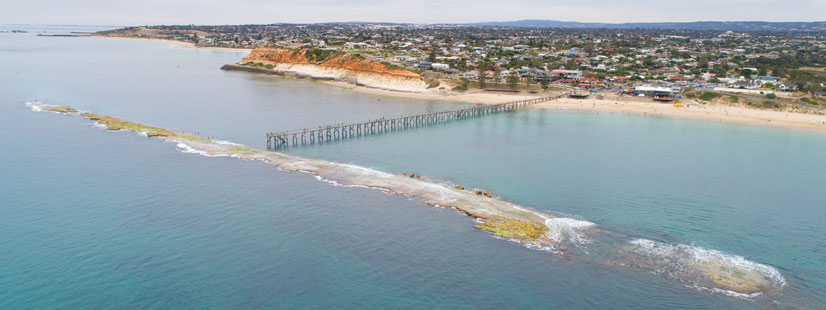
The Yorke Peninsula is not only crawling with native South Australian creatures, it is also a magnificent scenic destination. Given COVID-19 restrictions, our closed borders give locals the perfect opportunity to explore our own land. The Encounter Marine Park is located from the southern metropolitan beach of Christies Beach to the northern coast of Kangaroo Island. This park is vital for the preservation of our ocean wilderness and is a spectacular destination to see SA’s thriving marine life. We will focus on three rare species that are delightful to swim with and are habitually found in our waters.
The frightful Harlequin Fish (pictured below), Othos dentex, is uniquely South Australian, can be found among the rocky reed and is a slow mover, meaning they are easy to spot but also vulnerable for capture, which is why there are restrictions on the species. They also maintain a specific male to female ratio; therefore, it is important to maintain the population balance. They can live up to 40 years and grow up to 76cm in length, and are known for their deceitful hunting, wherein they hide from their prey, let them pass and then jump out to attack them.

The southern blue devil, Paraplesiops meleagrisis, can usually be found dwelling in caves, crevices or among shipwrecks. This grumpy beast also ages well, living up to 60 years and growing up to 35cm in length. It is likely that reproductive capacity and dispersal are low, given the habits and population dynamics of this species. Blue devils are known for their slow pace and trusting nature, making them a beloved fish among divers given their close encounters with the fish.

Finally, the Western Blue Groper, Achoerodus gouldii, is a gentle giant, growing up to about 160cm. They usually settle in sheltered macroalgae on shallow rocky bottom. This fish is the eldest of the three, living up to 70 years, and maturing at a slow rate. The Western Blue Groper is absolutely fascinating given it is one of few fish that change sex with age. It is slow-moving and inquisitive and will approach divers and fishing boats.

Now is the perfect time to get out there and explore what we alone have to offer in SA - but remember to leave these species behind for future generations to enjoy their wonder.
Works cited
Baker, J.L. (2011) Reef Fishes of Conservation Concern in South Australia - A Field Guide. Booklet produced with support from the Adelaide and Mt Lofty Ranges Natural Resources Management Board, South Australia.